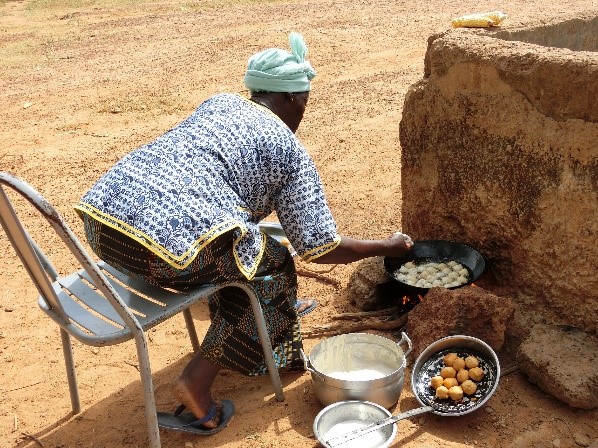Pick Up
3. Changing perspectives in agricultural research on global food and nutrition security

The state of food security and nutrition is one of the major issues that needs to be tackled globally. The Sustainable Development Goals (SDGs) aim to end hunger, achieve food security and improved nutrition improvement. The United Nations System Standing Committee on Nutrition has set 2016-2025 as the “UN Decade of Action on Nutrition” to increase international awareness. In Japan, a public-private partnership Nutrition Japan Public Private Platform (NJPPP) and a JICA-led Initiative for Food and Nutrition Security in Africa (IFNA) were launched in 2016, and the IFNA Yokohama Declaration was adopted at the 7th Tokyo International Conference on African Development (TICAD7) in 2019. In December 2020, Japan will host the Tokyo Nutrition for Growth Summit (N4G 2020) to stimulate international efforts to improve nutrition in line with the Tokyo Olympics and Paralympics.
The world population suffering from hunger is approximately 820 million and has been on the rise for several years (FAO 2019). Insufficiency of micronutrients in vitamins and minerals (“hidden hunger”) is also widespread, and including overweight and obesity due to overnutrition, not a single country is currently free of all forms of malnutrition (Development Initiatives 2018). Furthermore, multiple challenges appear at the same time (double burden, triple burden). We should make efforts to supply nutrients needed in terms of both quantity and quality to alleviate hunger and to stay healthy in all countries and regions.
Nutritional improvement needs multisectoral approach including many sectors such as health, education, and gender. Agriculture is one of the most important and essential sectors as it produces food to provide nutrition. Agricultural research has been primarily aimed at producing more food; however, it is now undergoing transformation with a shift towards building an agricultural system that can stably supply healthy food without too much burden on the planet Earth.
As demonstrated in the paradigm on sustainability used in the concept of “planetary boundaries” (Rockström et al. 2009), human activities including agriculture, forestry and fisheries are bringing the Earth closer to its limits. For this reason, the “doughnut economics”, a doughnut-shaped visual framework for sustainable development (Raworth 2017), should aim for convergence to an optimal range that functions socially rather than unlimited growth. According to the report of the EAT-Lancet Commission on Healthy Diets from Sustainable Food Systems, food is what balances human health and environmental sustainability. In order for all 10 billion people to be able to eat a healthy diet and to establish a sustainable food system in 2050, it will be necessary to increase the consumption of plant-based foods and reduce the consumption of animal-source foods, aim to produce healthy and sustainable foods, enhance strategies to reduce food loss, and protect half of the earth for ecosystems (Willett et al. 2019). Having said that, as the cost of an ideal meal is too high to reach about 1.6 billion people (Hirvonen et al. 2019), it is still a long way towards achieving this goal.
At JIRCAS, we conduct field surveys and analyze the food patterns and nutritional supply in rural areas empirically from the food consumed by households in Madagascar and Burkina Faso. The lack of specific nutrient supply due to unbalanced diet (Shiratori and Nishide 2018; Shiratori et al. 2018), regionality and seasonality in food diversity and nutrient supply have become evident. We will continue to explore more effective methods to characterize the agricultural and nutritional status, while paying attention to the relationship between cultivated crops and food, as well as consumer preferences and behaviors. We aim to contribute the world's food and nutrition security by strategically applying the results of analysis to agriculture, forestry and fisheries research.
References
FAO (2019) The State of Food Security and Nutrition in the World
Development Initiatives (2018) Global Nutrition Report
Rockström, J. et al. (2009) A safe operating space for humanity. Nature, 461(7263): 472-475.
Raworth K. (2017) Doughnut economics: seven ways to think like a 21st century economist. London: Penguin Random House.
Shiratori, S., Nishide, A. and Doi, K. (2018) Agriculture and rural development strategy in Madagascar from the viewpoint of nutritional balance. Journal of Japanese Society of Irrigation, Drainage and Reclamation Engineering, 86(10):881-884 (in Japanese).
(Contributed by Dr. Shiratori Sakiko, Research Strategy Office)

